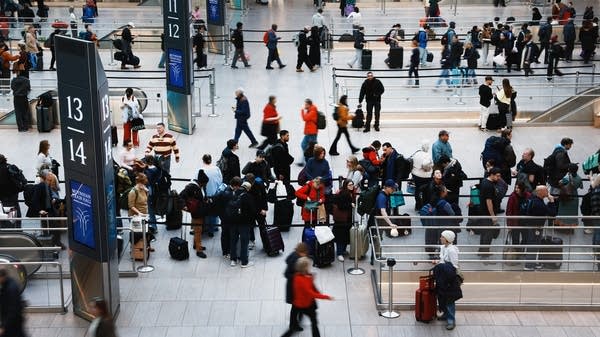U.S. labor productivity dropped in the first quarter
Productivity is tied to worker wages, so a drop can be cause for concern.

Labor productivity in the U.S. dropped in the first quarter of this year, according to new data from the Bureau of Labor Statistics.
Productivity, of course, refers to how many goods and services the average worker produces per hour. And it’s important — economists tell us — because when workers are more productive, that often means their wages rise.
So how concerned should we be about the recent drop in productivity?
Productivity had previously been on something of a hot streak. For years, workers had been producing more and more — until now.
“The rate overall kinda fell by 0.8%. And that, in terms of magnitude, was the largest since 2022,” said Celeste Carruthers, an economist at the University of Tennessee.
A single drop is no reason to panic, she said. “Quarter to quarter, the labor productivity measure can be fairly volatile.”
Productivity comes from a simple ratio: GDP divided by total hours worked. And there’s a reason it fell last quarter, said Gerald Cohen, an economist at the University of North Carolina.
“So that's really the result of the kind of funky nature of the GDP number that was released last week,” he said.
Funky, because GDP fell last quarter, thanks to a jump in the trade deficit — “people frontloading before the tariffs,” Cohen said.
So, he added, that funky GDP number explains this funky productivity number, and it could all just be a one-off drop.
Productivity could go right back up, points out Gary Schlossberg, global strategist with the Wells Fargo Investment Institute.
“We should start to pick up some of the benefits of artificial intelligence, digitalization,” he said.
But government policy is a wild card, per Pavlina Tcherneva, an economics professor at Bard College. Of course, we’re talking about tariffs and direct government investments, something the Trump administration is trying to reduce.
“There are contractors that are relying on the government spending, and they will see a decline in output if those dry up,” she said.
And if lower output leads to lower productivity, Tcherneva said that would be bad news for worker wages.













